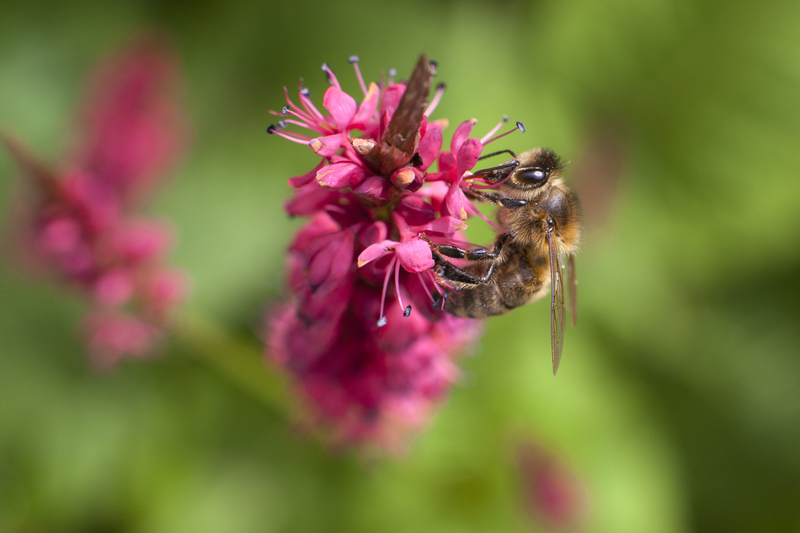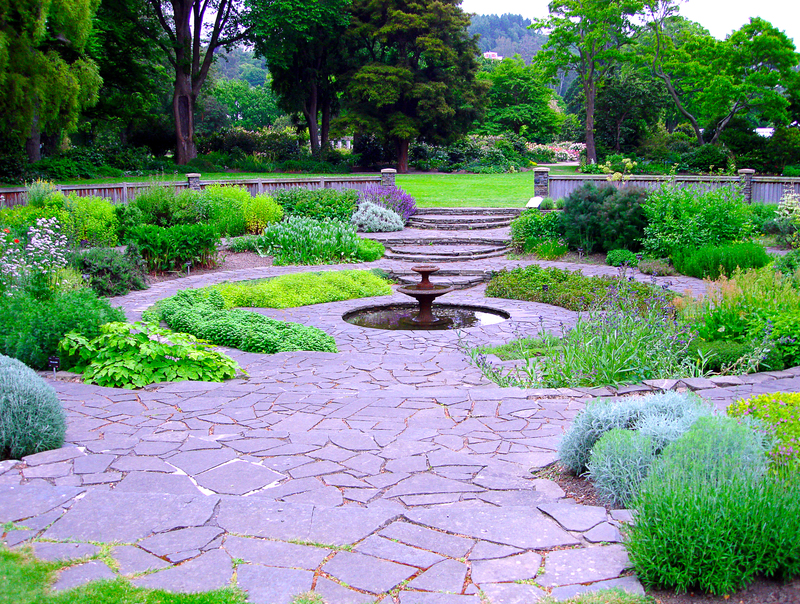Container gardening tips for healthy, thriving plants
Posted on 13/08/2025
Container Gardening Tips for Healthy, Thriving Plants
Container gardening has surged in popularity, transforming balconies, patios, and windowsills into lush, vibrant oases. Whether you're an enthusiastic beginner or an experienced green thumb, unlocking the secrets to healthy container plants can help your mini-garden flourish. In this comprehensive guide, we'll dive into proven container gardening techniques to ensure your plants not only survive--but truly thrive.
Why Choose Container Gardening?
Container gardens offer unique benefits:
- Flexibility: Move pots for optimal sunlight, aesthetics, or to shelter them from harsh weather.
- Space-saving: Perfect for those who lack a traditional yard or garden plot.
- Pest Management: Containers can help protect your plants from soil-borne diseases and pests.
- Control: You manage the soil, water, and nutrients your plants receive, maximizing plant health.
But with these advantages come unique challenges. Let's explore expert-backed container gardening tips to hone your skills.

1. Choose the Right Container
Material Matters
- Terracotta: Porous and beautiful; great for drought-tolerant plants but dries out quickly.
- Plastic: Lightweight and retains moisture; excellent for thirsty plants.
- Ceramic/Glazed: Stylish and durable; retains water but can be heavy.
- Metal: Chic, but can heat up roots fast; best in shade or for temporary arrangements.
- Wood: Natural look, good insulation; ensure it's rot-resistant (like cedar).
Size and Drainage
Ensure your container has adequate drainage holes. Healthy container gardening starts with preventing soggy roots! Bigger containers offer root space and buffer temperature and moisture fluctuations. As a general rule:
- Small plants or herbs: At least 6-8 inches deep.
- Vegetables or large flowers: 12-18 inches deep or wider.
2. Use High-Quality Potting Mix
Avoid garden soil, which becomes compacted and poorly drained in containers. Instead, select a premium potting mix tailored for containers, often labeled "soilless." Great potting mix ensures:
- Proper aeration for roots to breathe.
- Drainage to prevent root rot.
- Moisture retention balanced with dryness prevention.
- Added nutrients for growth (or start with a mix and add fertilizer regularly).
Consider specialty potting mixes for specific plants (e.g., cactus, orchid, or vegetable blends).
3. Select Healthy, Suitable Plants
Choose plants that suit your light, temperature, and container size. Healthy potted plants include:
- Herbs: Basil, mint, thyme, chives, and rosemary are container superstars.
- Vegetables: Tomatoes, peppers, lettuce, radishes, and beans have compact or patio varieties that thrive in pots.
- Flowers: Petunias, geraniums, begonias, pansies, and impatiens add color throughout the season.
- Succulents & Cacti: Require little water and minimal care--ideal for sunny spots.
- Houseplants: Snake plant, pothos, and spider plant can easily transition from indoors to outdoor containers.
4. Watering Wisely
Consistent Care
Watering is the most critical aspect of container gardening. Containers dry out faster than garden beds, especially in hot weather. Here's how to master it:
- Test Before Watering: Stick your finger one inch into the soil; water only if it feels dry.
- Water Thoroughly: Soak until water drains from the holes.
- Frequency: May need watering once daily in summer; less in cool, cloudy weather.
- Morning is the best time--reduces evaporation and minimizes disease risk.
- Self-watering containers: Great for busy gardeners and for maintaining healthy roots.
5. Fertilize Regularly
Nourishment for Growth
Container soils lose nutrients faster due to frequent watering. Feed your plants with:
- Slow-release fertilizers: Mix granules into the soil at planting for continuous feeding.
- Liquid fertilizers: Apply every 2-4 weeks as a supplement, especially for heavy-feeding plants.
- Organic options: Compost tea, seaweed extract, or worm castings enrich the soil naturally.
- Follow label instructions to avoid over-fertilizing, which can burn roots or encourage excessive leafy growth.
6. Provide Adequate Light
Plants have varied sunlight needs. Check tags or research each species:
- Full Sun: 6+ hours direct sun (tomatoes, peppers, most herbs, annual flowers).
- Partial Sun/Part Shade: 3-6 hours of direct or filtered light (lettuce, spinach, coleus).
- Shade: Less than 3 hours of sun (ferns, impatiens, caladiums).
Rotate containers to ensure even growth. If you're limited on sunlight, choose shade-tolerant varieties or use grow lights for indoor container gardens.
7. Group Plants with Similar Needs
Mixing plants with different water, light, or soil needs can result in stress or failure. For a harmonious, healthy container garden:
- Match by Watering: Pair drought-loving succulents together; group moisture-loving annuals in another pot.
- Size Compatibility: Combine plants with similar growth rates and mature sizes to prevent overcrowding or competition.
- Light Requirements: Place sun-lovers and shade-tolerant varieties in their preferred spots.
8. Regular Maintenance and Pruning
Keep Your Garden Tidy and Strong
- Deadhead blooms: Remove spent flowers to encourage more blooms and prevent disease.
- Prune leggy growth: Trim back overgrown stems for bushier plants and better airflow.
- Inspect regularly for pests, diseases, or nutrient deficiencies. Early intervention is key to healthy plants.
- Rotate and reposition: Turn pots regularly for uniform sunlight and growth.
- Refresh soil: Top off with compost or repot annually for best results.
9. Watch for Pests and Diseases
Even container plants can suffer from aphids, spider mites, whiteflies, powdery mildew, and root rot. Effective disease and pest management includes:
- Quarantine: Isolate new or sick plants before introducing them to your collection.
- Bathe leaves: Gently wash with water or use insecticidal soap if pests are present.
- Use neem oil or other natural treatments for infestations.
- Good airflow and sanitation prevent problems--don't let spent flowers or leaves clutter soil.
- Monitor drainage: Prevent root rot by ensuring excess water escapes freely.
10. Overwintering and Seasonal Care
Some container plants are annuals, but perennials, shrubs, and small trees may need protection over winter:
- Move containers indoors or into a protected garage or shed as cold approaches.
- Use frost cloth or bubble wrap to insulate delicate roots.
- Reduce watering in late fall and winter to prevent root rot.
- For hardy containers, raise pots off surrounding ground to prevent freezing and cracking.
Creative Container Gardening Ideas
- Vertical gardens: Use stacked pots or wall planters for maximum impact in small spaces.
- Edible landscapes: Grow herbs, greens, and compact fruits like strawberries on balconies.
- Color themes: Group plants with coordinated blooms or foliage for stunning displays.
- Recycled containers: Give old buckets, barrels, and even boots new life as unique planters!
- Mix textures and heights for eye-catching, healthy container gardens that add intrigue year-round.
Common Container Gardening Mistakes to Avoid
- Overcrowding: Gives roots little room and encourages disease. Follow spacing recommendations!
- Poor drainage: Always ensure adequate holes and use potting mix, not garden soil.
- Under- or over-watering: Know your plants' needs; use mulch to retain moisture and regulate temperature.
- Ignoring nutrition: Fertilize consistently--container plants cannot seek nutrients outside the pot.
- Neglecting sun requirements: Place shade-lovers and sun-worshippers appropriately.

Key Benefits of Thriving Container Gardening
- Improved air quality: Plants filter indoor and outdoor air, contributing to wellness.
- Fresh food & herbs: Harvest right from your patio--healthy and satisfying.
- Pollinator support: Flowers attract bees, butterflies, and birds to urban areas.
- Therapeutic value: Gardening reduces stress and boosts mood.
- Year-round beauty: Containers can be swapped out for seasonal interest and decor.
Conclusion
With the right knowledge and care, container gardening is one of the most accessible, rewarding ways to grow plants--no matter your space or skill level. By following these expert container gardening tips for thriving plants, you'll create robust, beautiful containized gardens that bring joy (and maybe even fresh produce) season after season.
Start small, experiment with varieties, and enjoy watching your potted plants become the highlight of your home or outdoor space!

